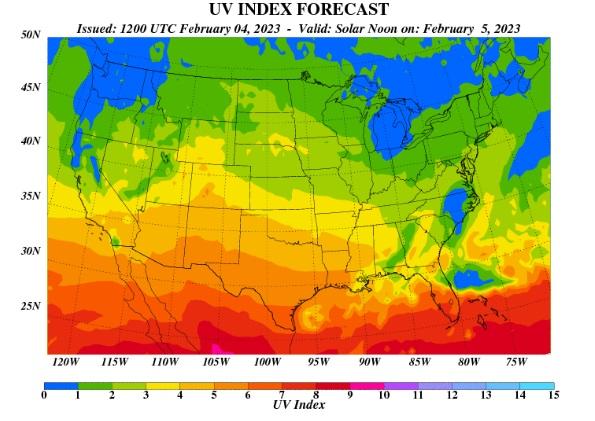As the summer months approach and many of us look forward to spending time outdoors, it’s important to be aware of the dangers of ultraviolet (UV) radiation. One way to gauge the level of UV radiation and the potential risks it poses is through the UV Index. But, what exactly is the UV Index and how can it help us protect ourselves from the sun’s harmful rays?
The UV Index is a measure of the amount of UV radiation reaching the earth’s surface. It ranges from 0 to 11+, with higher numbers indicating a greater risk of harmful UV radiation. The UV Index is measured on a daily basis and is reported in weather forecasts and other sources of information. It’s important to check the UV Index before you plan to spend time outdoors so you can take the necessary precautions to protect yourself. Understanding the UV Index is important for taking the right precautions for you and your loved ones. It’s also a good idea to check the UV index throughout the day, as it can change depending on the time of day and weather conditions.
UV radiation is classified into three types: UVA, UVB, and UVC. UVA and UVB are the most common types of UV radiation that reach the earth’s surface. UVA radiation is responsible for skin aging and wrinkling, while UVB radiation is responsible for sunburn and skin cancer. UVC radiation is mostly filtered out by the earth’s atmosphere, but it can still be dangerous if it is not properly shielded. Knowing the different types of UV radiation is important for understanding the risks associated with the UV Index. For example, UVB radiation is more intense during the summer months, while UVA radiation is present year-round. It’s important to protect yourself from both types of radiation to minimize the risk of skin damage.
The UV Index can help you to determine the level of UV radiation and the potential risks it poses. The higher the number, the greater the risk of harmful UV radiation. A UV Index of 0 to 2 is considered low, 3 to 5 is moderate, 6 to 7 is high, 8 to 10 is very high, and 11+ is extremely high. It’s important to take extra precautions, such as wearing protective clothing and using sunscreen, when the UV Index is high. Understanding the different levels of the UV index is important for taking the right precautions. For example, when the UV index is high, you should avoid spending long periods of time in direct sunlight, wear protective clothing, and use a sunscreen with a high SPF.
One of the best ways to protect yourself from the sun’s harmful rays is to use sunscreen. Sunscreen is a cream or lotion that is applied to the skin to protect it from UV radiation. It is important to use sunscreen with a sun protection factor (SPF) of at least 15. Sunscreen should be applied 20 minutes before going outside and should be reapplied every two hours, or after swimming or sweating. Using sunscreen is one of the most effective ways to protect your skin from the sun’s harmful rays. It’s important to use a sunscreen with a high SPF, as well as to reapply it frequently, especially when swimming or sweating. It’s also a good idea to choose a sunscreen that is water-resistant, so it will stay on your skin even when you’re sweating or swimming.
In addition to using sunscreen, it’s also important to take other precautions to protect yourself from the sun’s harmful rays. This includes wearing protective clothing, such as long-sleeved shirts and wide-brimmed hats, and seeking shade during the hottest parts of the day. Wearing protective clothing and seeking shade are important for protecting your skin from the sun’s harmful rays. It’s also important to be mindful of the time of day, as UV radiation is strongest between the hours of 10 a.m. and 4 p.m. It’s a good idea to plan your outdoor activities for early in the morning or later in the evening, when the sun’s rays are less intense.
It’s also important to be aware that UV radiation can be reflected off surfaces such as water, sand, and snow, increasing the risk of sunburn and skin damage. It’s important to take extra precautions when you’re spending time near water, on the beach, or in the mountains, as the risk of sunburn and skin damage is greater. It’s also important to be aware that UV radiation can penetrate through clouds and glass, so it’s important to protect yourself even on cloudy days or when you’re indoors near windows.
The UV Index is an important tool for understanding the level of UV radiation and the potential risks it poses. By checking the UV Index, wearing protective clothing, using sunscreen, seeking shade, and being mindful of the time of day, we can all enjoy the great outdoors and minimize our risk of skin cancer, sunburn, and other harmful effects of UV radiation. It’s important to be aware that UV radiation can be reflected off surfaces, and to take extra precautions when spending time near water, on the beach, or in the mountains. It’s also important to be aware that UV radiation can penetrate through clouds and glass. By taking the necessary precautions, we can all enjoy the summer months safely.
References:










